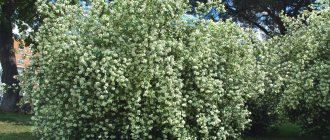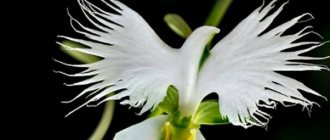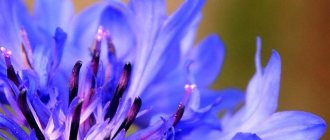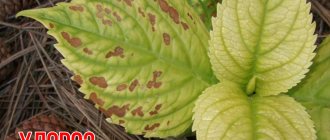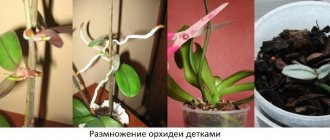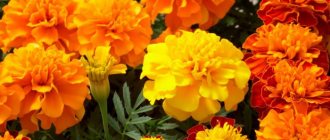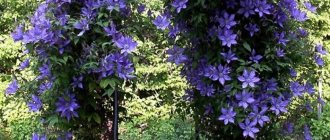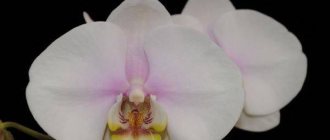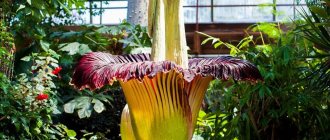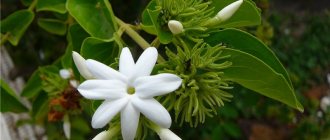Wonderful hydrangeas
The hydrangea plant belongs to the Hydrangeaceae family.
In total there are about 100 varieties of it. Among them there are upright, climbing, evergreen, deciduous, heat-loving and frost-resistant forms. In temperate latitudes, hydrangea flowers are bushes reaching a height of 1.5 m. The plants have large green oval-shaped leaves with wavy edges. From mid-summer they begin to bloom and delight with their beauty until the end of autumn. When in bloom, the plants are covered with beautiful multi-colored caps-inflorescences, behind which the leaves are practically invisible. Their color depends on the acidity level of the soil. Flowers can be pink, cream, white, purple, blue or lilac. Their beauty can be appreciated by the photos of hydrangeas given in the article. Planting flowers and caring for them require certain knowledge so that gorgeous flowers delight with their beauty. Professional gardeners note that the crop is relatively unpretentious. That is why it is actively planted in gardens, parks, garden plots, near houses and in public gardens. Depending on what goals landscape designers pursue, they choose liana forms, shrubs or plants in the form of a small tree.
Indoor hydrangea: more capricious, but no less beautiful
Luxurious pastel caps of hydrangeas are equally impressive on garden bushes and on much more modest potted plants. The flowering of hydrangeas - their main advantage - can be fully appreciated regardless of the form of cultivation. After all, the greenery of hydrangeas, although irresistible in its own way, still does not make this shrub stand out from the general mass of plants. Moreover, hydrangea loses its leaves in the winter. These moisture-loving beauties with a special “elite” status grow well in the home format. They require very careful selection of temperatures, and are generally demanding in terms of conditions and care, but they also have few competitors.
Indoor hydrangea is more capricious, but no less beautiful.
Why are aconite and hydrangea an ideal pair?
For all their visual attractiveness, many types of aconite, and, above all, aconite, have one significant drawback - weak, arched, drooping stems. They need a garter so that the rather tall bushes maintain an upright position and straight stems. Otherwise, their stems begin to bend toward the ground and become bent.
But in natural flower beds, tied plants look unnatural. And here the combination with hydrangea turns out to be very successful, because its woody bushes can serve as a natural support for aconite. To do this, you need to plant aconite not in front of the hydrangea, but push it a little under the bush, helping the stems get to the light between the branches of the bush.
The flowering time of aconite capillary and tree hydrangea approximately coincides. And when aconite blooms, young greenish caps appear on the hydrangea. A very harmonious combination of purple and lime colors is created with each other. The size of the flowers also allows you to create a successful duet, since an individual aconite flower is twice the size of an individual hydrangea flower. At the same time, the aconite inflorescences are much smaller than the hydrangea cap, which gives a remarkable contrast.
When the hydrangea inflorescences turn white, aconite still continues to bloom. To extend such a successful combination until late autumn, you can add other types of aconite to the flower garden, in particular, Carmehill aconite, which blooms until October. By the way, this type of aconite can be planted in front of hydrangea bushes or between them, because this species has a stronger and more resistant stem that does not need support.
Aconite and hydrangea are also ideal for growth conditions. Both plants tolerate partial shade and require regular watering. Both hydrangea and aconite prefer loamy, moisture-intensive soils with a slightly acidic reaction. Moreover, despite the moisture-loving nature, the soil for them must be well-drained, because their root system easily rots when there is excess moisture. Joint plantings of aconite respond very well if they are mulched with peat.
Hydrangea serves as a support for aconite stems. Lyudmila Svetlitskaya
Decorative deciduous and coniferous frames
Another opportunity to beautifully highlight a hydrangea bush so that all attention is concentrated on it is to plant a plant next to it without flowers, but with large leaves. It’s easy to guess that we’ll be talking about hostas, heucheras or ferns. Like hydrangeas, ferns prefer shady places.
As for hostas and heucheras, there are so many species of these plants that you can easily choose what you need in terms of size, foliage color and other characteristics. Impeccable companion plants will give the flower garden the desired shape, while at the same time bringing to the fore the spectacular prima - hydrangea.
Coniferous plants can play exactly the same role in hydrangea. Devoid of flowers, like ferns, they create the perfect backdrop for the blooming beauty of hydrangea.
Southern regions of Russia
In the south of the country, all types of hydrangea can grow and bloom beautifully, but due to high temperatures and dry winds, the plant requires planting either in the shade of trees or buildings. In addition, watering is carried out at the first signs of dry soil.
Large leaf hydrangea
This is one of the most beautiful types of plants. It blooms in large spherical inflorescences, of different colors depending on the acidity of the soil. It requires care, grows better in partial shade, freezes slightly, requires shelter, winter-hardy varieties have been bred. It is better to grow in containers to bring indoors for the winter.
oakleaf hydrangea
The leaves look like oak leaves. Blooms with white spike-shaped inflorescences. Valued for the color and shape of the leaves (see photo). Loves sunny areas, good in landscape design. In central Russia it freezes slightly. Best varieties: Snow-white domes, Show Queen
Ash hydrangea
The second name is gray; it is rarely grown in Russian conditions. Looks good in hedges, suitable for making winter bouquets (see photo). Without pruning it takes on a neglected appearance.
Prefers fertile soil, does not like sun and winds. The variety (Macrophylla) has gained the most popularity.
Hydrangea serrata
The plant is distinguished by its beautiful color range and dependence on the composition of the soil. On alkaline soils it turns pink, on acidic soils it turns blue (see photo).
Serrated hydrangea Preziosa
Petiole hydrangea
This variety is a vine and grows up to 25 meters. With the help of aerial roots, it clings to supports and entwines the walls of the house, arches and gazebos. Flowers range from white to lilac (see photo). Prefers shade. For the winter it is removed and covered with non-woven material. Listed in the Red Book.
Replanting after purchase
You can replant hydrangea only after it has bloomed and the annual pruning has already been done. At this time, the plant prepares for a period of rest and stops its growth. If the plant was purchased in the fall, two weeks after the hydrangea appeared at home, it can be carefully transplanted into a permanent pot. She needs two weeks of rest to adapt to the new room, temperature and air movement patterns.
What is needed for planting
The new pot should be 3-4 cm wider than the previous one. The roots of any variety of hydrangea develop more horizontally than deep, so deep pots are not suitable for it.
The capacity needs to be increased every autumn, allowing the root system to grow and nourish the plant during the period of active flowering.
Optimal place
To ensure abundant and regular flowering, the flower must stand in a sufficiently illuminated area, and not be exposed to direct sunlight. If the room where the hydrangea will live has east or west windows, it should be placed not on the windowsill, but near the window, on the outside of the tulle. This way she will receive enough light, and her leaves will not be damaged by the aggressive sun.
On a north or south window, this indoor beauty can be placed without fear by its leaves directly on the windowsill.
Step by step planting process
Transplantation should begin with the preparation of the earthen mixture. The soil must contain sand and peat, their total share should not exceed 1 part, in relation to turf soil, which requires 2 parts. Be sure to place drainage at the bottom of the new pot. It is unacceptable to include humus in the substrate.
Step by step transplant process:
Prepare a pot lined with drainage. Watering the soil with the plant still in the old pot will make the transfer process easier, preserving the earthen lump. After turning the flower pot over, carefully remove it, holding it by the stems, and then immediately lower it into a new pot. Fill the voids between the rhizome and the walls of the container with substrate so that there are no air gaps left. Once transplanting is complete, water thoroughly.
Additional Information. Replanting hydrangea in the spring can affect its flowering, for which the plant was purchased. Having lost its biological rhythm, hydrangea transplanted in spring will bloom only by next winter.
Tree hydrangea
In Russian gardens, this species is widely distributed under the names “White spherical” and “White bush hydrangea”.
These plant varieties in our area bloom much earlier than other species (from about mid-summer) and bloom until late autumn. No special preparation for winter is required, since the tree-like variety is quite frost-resistant and easily overwinters without shelter.
Hydrangea is pruned annually in the spring by a couple of buds, but in this case the shrub has a more sparse appearance, and the beginning of flowering is slightly delayed (around the end of July). Therefore, according to many gardeners, it is better to prune only weakened and damaged shoots along with outdated flowers.
A tree hydrangea bush with large white inflorescences of a classic shape is an excellent decoration for the threshold of a house.
Bright inflorescences of tree hydrangea are bright pink.
The contrast of white and green looks good on any summer cottage.
oakleaf beauty
Unlike the previous paniculata, oakleaf hydrangea is not so well known and widespread in our gardens. However, those places where it is grown, with the arrival of autumn, are decorated with crimson foliage and have a very impressive decorative appearance (Figure 3).
Oakleaf hydrangea can decorate any garden for all seasons. From summer to late autumn, it pleases its owners with luxurious inflorescences with a fragrant, pleasant aroma, which bees, butterflies and other insects fly to with pleasure. The flowers, as a rule, are white in color, their inflorescence has the shape of a cone.
Hydrangea should be planted in shady places or in partial shade; this will not affect the flowering of the plant in any way. As for the soil, it is better to use moisture-permeable mixtures. It is a good idea to feed the soil by adding fertilizers.
Like previous types of plants, oakleaf hydrangea requires absolutely simple care: it is enough to maintain the necessary soil moisture for this moisture-loving plant, without allowing the soil to dry out.
Oakleaf hydrangea is pruned in spring or autumn. Dead and damaged shoots are removed, allowing new ones to appear faster.
Oakleaf hydrangea, like many other species of this shrub, is highly resistant to cold. However, in the first year of its life, it is better to transplant it into a pot for the winter and care for it as a houseplant.
Large oakleaf hydrangea flowers. The white edging looks gentle and elegant.
A lush hydrangea bush fits perfectly into landscape design.
An example of a properly cared for hydrangea bush.
Features of care during the flowering period
In order for the plant to develop correctly and undergo all vegetative cycles on time, a set of different measures is necessary. Here are the main ones:
- Regular moistening with settled or rain water - 25-30 liters per week; in hot weather, you can water it more often.
- Mulching, loosening and weeding the circle near the rhizome - three times during the summer.
- In the spring, use bait with nitrogen, and during the period when it begins to bloom - fertilizer with potassium, once every 14 days.
- Annual cutting of branches to rejuvenate and shape the plant.
- The best soil is a mixture of peat, sand and turf in equal proportions.
In preparation for the rest period, it is necessary to remove the foliage, tie the hydrangea in a bunch, do hilling, and install supports.
Attention! To prevent large inflorescences from breaking the stems, it is recommended to use support fences around the bush
Frost resistance
In open ground in the garden, paniculate and tree-like types of hydrangea are most often grown. Despite the fact that they are considered cold-resistant, young plants require shelter during the frost period. Over time, the shrubs become more resistant to winter, and after the 4th year of existence they no longer need to be covered.
Regular pruning of branches
Brief history of the emergence of culture
Excavations in different parts of the world confirm that hydrangea appeared on earth millions of years ago. Initially it grew in the region of North America, and later migrated to Asian countries. Hydrangea (Hydrangea) received its Latin name because of the structure of the seed pod, which looks like a vessel for water.
The plant appeared in European gardens only in the 18th century; it was brought here from North America by D. Bartram, who was passionate about botany. It was a tree-like variety of hydrangea. Soon another botanist, K. Peter Thunberg, was sent to the Japanese islands to obtain large-leaved hydrangea seeds, which he managed to obtain with great difficulty. This is how new plant species began to spread in Europe.
Hydrangeas in landscape design
Another half century later, the German scientist F. von Siebold obtained and brought several varieties of this crop unknown to European botanists, including paniculata hydrangea.
For your information! At first, the plant was not so often used in the landscape design of European gardens. Real popularity came to him at the beginning of the 20th century. after the next botanical exhibition. This was the beginning of the widespread spread of the culture in many countries where hydrangea is still popular.
Removing the first flowers to stimulate flowering
In the first year of flowering, the appearance of the first buds may also be the reason why the hydrangea shredded. In order for the buds to be large, it is necessary to trim the first inflorescences. Otherwise, the plant will devote all its energy to their formation, which can negatively affect the root system. In the future, small buds may form on the bush, and it may bloom less often.
Removing the first buds
Hydrangea differs in the size of its buds during flowering. Most often, the inflorescences have the shape of a small cap. However, with improper care and lack of nutrients, the flowers become small or appear in small quantities. To eliminate the problem, it is necessary to take timely measures.
Growing in a pot at home
Planting and transplanting
How to care for hydrangea at home?
Indoor hydrangea should be planted in acidic soil with a pH level of 5.5. The mixture may include peat, coniferous soil, humus and sand. The pot is preferably large and wide, due to the growing root system. The root collar does not need to be covered; it should be flush with the ground. When planting, mulching with peat is recommended. The hydrangea will have to be replanted every 2-3 years. Each new pot should be 1.5 times larger than its predecessor.
Lighting
In summer, hydrangea prefers moderate sun; it will favorably accept partial shade in a well-lit room. It is better to protect the flower from direct sunlight at this time. In winter, completely darkened rooms are also acceptable - during the rest period, lighting does not play a big role.
But at the end of winter, the plant will be happy with well-lit windowsills, because it needs a lot of light to form buds.
Watering
There is nothing outstanding in the hydrangea watering scheme. Experienced florists recommend not to overdry the earthen ball in the pot, but also not to over-moisten it. Moderate to heavy watering is required as the top layer of soil dries out.
Reference! Surprisingly, the moisture-loving hydrangea is not afraid of drying out, and there is always a good chance of “watering off” a dried plant.
Water for irrigation should be soft, settled and at room temperature. Some people prefer to water their hydrangeas with rain or cooled boiled water. In the fall, watering is reduced, and in winter it is stopped completely - until the buds appear.
Air humidity
Accustomed to the maritime climate, hydrangea will be grateful for regular spraying, as it loves humidity. The flower should be sprayed especially frequently and generously if it is located close to heating devices that dry out the air (by the way, this is extremely undesirable for hydrangeas).
Bathing will not harm hydrangeas: the pot with the flower is dipped in water for a while, and then the moisture is allowed to drain completely.
Temperature
During the active period, hydrangea requires a temperature within 18-20 degrees Celsius. In summer it can be taken outside. During the rest period, the room should not be hotter than 8 degrees. Therefore, in winter, when placing a flower on the windowsill, try to protect it from the heat of the radiators.
Fertilizer
Feed hydrangea once a week during its flowering period. Fertilizing is also carried out in winter to stimulate growth. Both complex mineral and organic fertilizers are suitable for this. Ammonium nitrate or superphosphate will help the flower grow.
Bloom
Hydrangea inflorescences have an impressive hemispherical shape, resembling an umbrella up to 20 cm in diameter. There can be up to 6 of them on one plant. They delight the eye of florists from April to November. The most spectacular flowers appear on hydrangeas in the first years of flowering. Over time, they become smaller and may even become bent due to the elongation of the shoots.
Recommendation! Why doesn't indoor hydrangea bloom? In order for the inflorescences to form as needed, you should regularly rejuvenate the plant - that is, engage in its vegetative propagation.
Do I need to trim?
After flowering, the hydrangea shoots are cut off by almost half, leaving a few of the strongest ones. This will help the flower form beautifully and harmoniously. Partial pruning is also carried out in the spring - weak and overly elongated shoots are removed.
Reproduction methods
Indoor hydrangea is propagated by cuttings - as a rule, these are sprouts that make the crown too thick. The most suitable time for the breeding procedure is July. Sprouts 7-10 cm long with 2-3 internodes are cut at an angle (3-4 m below the node).
The leaves are cut in half, after which the sprouts are planted in river sand or the lightest soil, deepening by 1.5-2 cm. They are either covered with a jar or polyethylene, or left open, but regularly sprayed.
The required temperature is 22-25 degrees Celsius. It is necessary to keep the cuttings in these conditions until the first leaves appear - as a rule, you have to wait up to a month and a half.
At this point, young hydrangeas can be planted in separate pots; after a couple of weeks, the tops can be pinched and gradually accustomed to normal conditions.
Watch a video about propagating indoor hydrangea:
Growth per year
The growth rate of indoor hydrangea will depend on its care. The maximum height that indoor hydrangea can reach is 1 meter.
Rare Vancouver mountain flowers
Vancouveria (VANCOUVERIA). Barberry family.
Vancouveria sixstamen (V. hexandra) are perennials from the mountain forests of the western United States. These are low (25-30 cm) plants with a long rhizome (therefore they form thickets), the leaves are light green, dense (but not overwintering), trifoliate on thin, hard petioles. The flowers are white in an openwork inflorescence.
Growing conditions. Shady areas under a canopy of broadleaf trees whose foliage covers the Vancouver bush in the fall. Any soil, but well drained.
Reproduction. By dividing the bush (at the end of summer). Planting density - 16 pcs. per 1 m2.
Vancouveria are rare mountain flowers from California, little known in cultivation. This ground cover plant naturally forms dense, large patches. In cultivation in central Russia, it grows slowly: the growth of each specimen per year is no more than 2-3 cm. But the gardener’s patience will be duly rewarded. Firstly, Vancouver bushes live for a very long time - up to 40 years
Secondly, its trifoliate leaves and delicate white flowers attract attention with their originality. In addition, this herbaceous ornamental perennial is highly drought-resistant and shade-tolerant, so it is recommended for shaded areas and rockeries.
Does not set seeds in cultivation.
As can be seen in the photo, these mountain plants are often used in shady rockeries to create ground cover on tree trunks.
Proper pruning
Proper care is the key to obtaining beautiful hydrangea flowers. Garden flowers are a decoration for any area. To achieve abundant and beautiful flowering, it is necessary to prune the bushes. For beginning gardeners, pruning means removing dry twigs and leaves. Actually this is not true. Hydrangeas need crown formation.
In the first year, the shoots of the plant are shortened to a strong bud. In autumn, only weakened shoots can be pruned. In the second year, the branches are shortened to increments, and in the third, dry shoots are removed. In the future, pruning of weak branches is carried out as needed.
It is worth knowing that some varieties of crops form flowers only on last year’s shoots, so only faded inflorescences are removed from such plants. In August, flower buds are already forming on the bushes for next year. Drastic cutting of such plants can deprive them of flowering in the future.
Shrub similar to hydrangea
Among the shrubs there are some specimens that are very similar to hydrangea.
Pentas
Latin name Pentas. Belongs to the Marenov family. Among gardeners, pentas is called the Egyptian star.
Hydrangea does not grow in all regions of Russia, but there is an excellent alternative to it
The leaves, depending on the variety, can be lanceolate or ovoid in shape. The height rarely exceeds 80 cm. Five-petal flowers have snow-white, scarlet, lavender, soft pink, crimson, and burgundy colors.
A native of Africa and Madagascar, it can be grown as both a garden and indoor plant. This beautifully flowering shrub will not survive in the Russian winter. Therefore, it is better to grow it in a greenhouse in winter, and take it out into the garden directly in a pot in summer. Pentas does not tolerate temperatures of −7 °C. In the southern regions of Russia, this bush can be planted directly into the ground.
For your information! Flowering in the greenhouse also occurs in winter.
Pentas - a flower similar to hydrangea
Phloxes
May is the time of blooming of another flower similar to hydrangea. Phlox also has bright, large inflorescences. Unlike hydrangea, phlox is a herbaceous plant. These flowers are unpretentious, they grow well even in the cool Siberian climate and are not so demanding on the amount of moisture.
Phlox paniculata is most similar to hydrangea. The main colors of the flowers are pink and red. There are also pale lilac, white, deep purple, and lavender varieties. There are varieties with two-color petals.
Phlox paniculata, apple blossom variety
Buddleya
Another flower similar to hydrangea is buddleia. Even in harsh climates, it grows in the form of a bush up to 3 m high. The leaves are dark green, large, oblong with white fluff on the back side.
Buddleia petals have white, pink, yellow-orange, lilac, purple, violet shades.
Note! Buddleia belongs to the Norichkov family. Distributed in Africa, Asia and America
Blooms in July. Flowering lasts up to one and a half months, and in the southern regions - up to two months. Buddleia is commonly called autumn lilac due to the similarity of its inflorescences.
Buddleia is loved not only for its beautiful inflorescences, but also for its pleasant smell that attracts butterflies. Because of this, it is called the butterfly tree.
The buddleia bush pleases its owner with clusters of flowers for at least 10 years. Some varieties take root well even in cool regions.
Buddleia has been growing in one place for more than 10 years.
Verbena
Another bright color in the garden palette is verbena. In some sources, this plant may be called pigeon grass, or iron grass.
Often found in Europe and North America.
This is a herbaceous plant up to half a meter high. Tall varieties can reach 1 m. The spherical inflorescences are colored lilac, snow-white, scarlet, peach, pink, and orange. There are varieties with variegated and striped petals.
Verbena is unpretentious: it grows well both in bright sun and in the shade. Loves moisture, but is less demanding on the frequency of watering than hydrangea.
Verbena is less demanding to care for
Heliotrope
Another flower similar in appearance to hydrangea is heliotrope. It belongs to the Borage family. Leaves and inflorescences always turn to follow the rays of the sun. This feature was noticed by the ancient Greeks. The name is translated as “turning towards the sun.”
Bushes up to 60 cm in height. The diameter of the inflorescence can reach 25 cm. The petals are white and different shades of purple.
Important! In warm climates it grows as a perennial plant. In regions with temperate and cool climates - as an annual
Prefers to grow in well-lit places, but not in direct sun. Heliotrope does not like very wet places; its root system can rot.
Heliotrope does not like swampy areas
What does ashen hydrangea (Hydrangea Cinerea), or gray, look like?
Ash hydrangea is an ornamental shrub native to North America. Refers to perennial deciduous plants. This variety of hydrangea got its name, ashen, for the appearance of its leaves. On the outside they are smooth and green, and on the reverse side they have a gray edge, reminiscent of felt in appearance and touch. There is another name for this flower - gray hydrangea.
Wild rose - what kind of flower is it, what is it called
Hydrangea forms a spreading shrub reaching 2 m in height. The flowers are always white, collected in inflorescences in the form of corymbs with a diameter of up to 15 cm. Flowering duration can reach 3 months, starting in July.
The soil for gray hydrangea should be loose and easily breathable. To drain excess moisture, the soil must be well drained.
Requires constant pruning and feeding. Water regularly, but do not turn the soil into a swamp.
Important! Because of its frost resistance, this type of hydrangea is ideal for growing even in cool regions of Russia.
Thus, among the varieties you can find one that will grow well in the Russian climate. You can also replace hydrangea with rhododendron, spirea, verbena, alyssum, heliotrope, budlea, phlox, pentas. They are no worse than her, and in some ways even better.
What are the names of flowers similar to hydrangea: their names and photos
Garden hydrangea is a real decoration of the garden plot, thanks to its lush inflorescences of various colors. But other garden plants can boast of the same decorative paniculate inflorescences.
10 plants similar in flowering to hydrangea with photos and descriptions
Gardeners and landscape designers have a variety of shrubs in their arsenal, which, like hydrangea, boast lush, bright caps of inflorescences. The following plants are the most popular.
Statica
Statica (notched kermek) is a herbaceous annual or perennial of the vinaceae family. In the wild, the plant is distributed throughout Eurasia. This is a tall plant with erect peduncles and a basal rosette of light or dark green leaves.
Stems up to 80 centimeters high are densely pubescent, leafless, crowned with inflorescences of small flowers. The corollas of flowers are inconspicuous and featureless. All the beauty of the inflorescences is given by multi-colored flower cups: snow-white, yellow, pink, purple, crimson, bright red.
Find out more about growing Statica plants in open ground.
Trachelium
Trachelium is an evergreen perennial from the bellflower family native to the Mediterranean countries. The name of the plant comes from the word “trachelos”, which means throat. The reason for this is that trachelium has medicinal properties: it can treat inflammatory diseases of the throat and respiratory system.
The resemblance to hydrangea is given to the plant by its “caps” of inflorescences, spectacularly rising above the dark green foliage in August-September. The flowers are painted mainly in bright blue or purple shades, but there are purple, white, and deep crimson tones. The flowers emit a sweet aroma, which attracts many butterflies to the bush.
Grasses, grains and ground covers
Since the use of grains and herbs in garden compositions is at the height of fashion today, you can decorate the space around the hydrangea with fescue, cortaderia, falaris or miscanthus. Take a special look at miscanthus, which, like hydrangea, loves to drink water. This means that nothing will harm their union.
To compact the composition, you can use ground cover plants that will successfully fill all existing voids. Creeping thyme, false sedum, non-capricious tenacious, periwinkle, and awl-shaped phlox will successfully cope with this task. These neighbors will help rid the flowerbed of weeds by crowding them out. After all, an inopportunely sprouted weed can spoil the entire impression of the gardener’s work.
Wintering culture
With the arrival of autumn, hydrangeas need to be prepared for wintering. In September, the plant still needs to be watered abundantly and the soil mulched. In October it is necessary to prune the bushes.
If you purchased flowering plants in the summer, you need to bury them along with the pots in the beds, covering them with dry leaves on top. Next, the hydrangeas are covered with lattice boxes, which are covered with film on top, leaving the side surfaces open. The plant will overwinter well in such a shelter.
According to experts, most decorative varieties need winter shelter. Even if there is no threat of frost, it is better to cover the bushes with special material.
There are several more options for forming the right shelter for the winter. The stems of the plant can be bent to the ground and secured with staples, and the base of the bush can be sprinkled with peat. Arcs are installed on top, which are covered with non-woven material in several layers. Before frost arrives, you can leave holes in the shelter for ventilation.
In addition, you can bend the shoots of the plant to the ground and cover it with spruce branches on top, then cover it with peat and cover it with a sheet of slate. This design is very effective in combating frost.
The third method involves building a frame around a bush, which is covered with pine needles and leaves, and covered with fiber from the outside. The top cover is protected from excess moisture.
With the arrival of spring, the plants open gradually. At first, only ventilation is provided for them. The shelter can be completely removed only after stable warm weather has established.
Indoor flowers blooming with white flowers
Many people know the perennial flower Campanula under the name “Bride”. Its white flowers are collected in clusters, and round, jagged leaves grow on soft green stems.
The original indoor flower that gives women happiness is called Spathiphyllum. At the top of a short peduncle, next to the opening petal, an elongated ear grows in the form of a white sail.
Grandmothers' favorite flowers are geraniums, which live on many windowsills and are now called Pelargoniums. Geraniums are plants with small simple flowers that grow in the open air in summer in natural conditions. But the beauties of Pelargonium bloom their white double inflorescences all year round.
Tuberous white Tuberose, planted in a pot, when flowering, emits aromas that combine shades of jasmine, lily, lily of the valley, and lemon.
Gardenia jasmine bushes with flowers collected in inflorescences reminiscent of a blooming rose require special care. But the beauty of these bushes forces housewives to carefully regulate the temperature and light conditions, take care of the nutritional value of the soil and timely replanting, as long as this plant is in the home flower garden.
Flowers with snow-white petals evoke a feeling of tenderness, make you relax, think about the good, pure and beautiful. Plants planted in the garden with flowers and leaves of white shades convince that it is better to live calmly and dream than to think about bad things.
And this is so important now, in our troubled times.
There are trees that I also want to note. Of course, not everyone will plant them in the garden, but during flowering they will bring joy both in appearance and smell. This is an ordinary white acacia. Which, in addition to aesthetic pleasure, also has rich medical functionality.
Hydrangea paniculata (H. paniculata)
The species got its name because of its large pyramidal inflorescences that look like panicles. The shrub is distinguished by its strong growth, winter hardiness (withstands up to −25 ° C), and durability. Flower buds are laid on young shoots, so even if some of last year's branches freeze, you will not be left without flowers.
It is not afraid of drastic pruning and quickly gains green mass. All this makes it ideal for growing in the unpredictable Russian climate.
The bush can grow up to 3 m in height and fall apart under the weight of the flowers. Therefore, it is necessary to restrain growth by pruning or tying up bushes.
Limelight (Limelight) - similar to the Grandiflora variety, but larger, more compact and stronger. It rises up to 2.5 m without falling apart. From July to October, the bushes are covered with large plumes of inflorescences, which at first have a lime tint, then turn white, and turn slightly pink closer to autumn.
Phantom (“Phantom”) is a record holder for height (2.5–3 m) and size of inflorescences. The huge panicles of white and creamy yellow are incredibly beautiful. Another advantage of the variety is its honey aroma, which is rarely found in hydrangeas.
Fragrant hydrangea variety “Phantom”
Bobo (“Bobo”) is a dwarf variety bred by Belgian breeders. The robust one, 70–90 cm high, is very hardy. From mid-summer to September it is decorated with dense pyramidal inflorescences that bloom with white flowers, but gradually acquire a delicate pink hue. The variety is suitable for container gardening.
He's so handsome - little Bobo
Vanille Fraise is a French variety that amazes with its gigantic inflorescence size (35–40 cm). From a distance they look like huge scoops of strawberry ice cream. The petals are creamy white at first, then this shade changes to pink and turns red.
Hydrangea Vanille Fraise in a mixborder
Wim´s Red is a German variety, the highlight of which is the large, up to 35 cm long cones of flowers that change color. The bush blooms with snow-white flowers, which turn pink, then dark pink and finally acquire a burgundy hue.
Hydrangea paniculata Wim´s Red
Great Star (“Great Star”). The inflorescences of this variety have few sterile flowers, but they are very large and look like a small propeller.
Great Star - one of the most exquisite varieties of paniculata hydrangea
Kyushu (“Kyushu”) - a variety once imported from Japan, is considered one of the most frost-resistant and fragrant. The plant forms tall (up to 3 m) fan-shaped bushes, which from mid-July are covered with graceful panicles with fertile (fruit-bearing) and sterile flowers.
Hydrangea Kyushu is ideal for natural style gardens
Description of the plant
At the moment, breeders have developed more than 100 varieties with different colors and sizes of inflorescences, so you can choose hydrangea for indoor growing according to several parameters:
color;
size of peduncles;
height of the bush.
If there are species that feel better indoors, as they are crossed with adapted plant specimens.
House hydrangea is a lush green bush with several round or pyramidal inflorescences. The inflorescence is complex, consisting of small flowers collected in a bunch.
The leaves are dark, ovoid, with pronounced veins and pointed tips. With well-organized care and feeding during the flowering period, most of the bush is occupied by inflorescences - approximately 2/3 of the total volume.
At home, in a pot you can find indoor hydrangea of all colors - red, white, blue, as well as half-tone colors and color combinations.
You can admire hydrangea at home until the frosts. Garden species also bloom for a long time, but subject to proper feeding, in which the caps of the inflorescences retain an attractive appearance.
All indoor hydrangeas are deciduous. Before wintering, they shed their leaves, so watering and fertilizing are not required during this period, since the roots do not consume food.
Differences from garden varieties
Caring for hydrangea at home in a pot is not much different from growing garden varieties. In addition to size (street varieties are taller and wider), there is also such a quality as frost resistance.
Indoor hydrangea is the same as garden hydrangea, only with reduced frost resistance. In mid-latitudes, a heat-loving plant cannot survive - it needs a greenhouse or a whole range of insulation measures.
Most often, the cone-shaped inflorescences of hydrangea are garden varieties, but they can also be kept in a large pot on the veranda.
Unpretentious types and varieties of hydrangea for Russian gardens (60 photos)
In nature there are quite a lot of ornamental shrubs, trees and hydrangea vines; the species and varieties for Russian gardens represent only a small part of them. In the botanical gardens of central Russia, as well as in some private collections, you can see rough, oak-leaved, serrated, rejected and petiole hydrangeas, as well as sargent and bretschneiter.
However, not all species feel comfortable in our conditions, so only collectors can be seriously interested in these plants. According to the majority of gardeners in central Russia, only a few species deserve attention due to two main criteria - ease of care and decorativeness of the plant. Below we will talk about how to care for plants and how propagation and pruning of hydrangeas of these varieties occurs.
Rough hydrangea is a decoration for the collections of domestic gardeners.
Snow-white flowers of oakleaf hydrangea.
Hydrangea serrata in a pot near the house. Serrated hydrangea looks like rough hydrangea.
A tall bush of petiolate hydrangea with lush white inflorescences.
Hydrangea variety sargent.
Conical inflorescence of Hydrangea bretschneiter.
In this article read:
Options for using hydrangea in landscape design
Different varieties on one site create conditions for creating almost masterpieces, unique in style and combination. There are many styles in which hydrangea becomes the basis. Most Popular:
- Rustic. Antique objects (cart, basket, kettle) are placed on the site. Containers for bushes are installed around or in them. The result is an unusual composition: a flowering cart, a multi-colored basket, an original teapot.
- English flower garden. The ensemble involves hedges and lush lawns. Tall hydrangea is placed in the center, low-growing varieties along the paths.
- East style. Japanese ornaments are created from hydrangeas. It highlights artificial paths and limits the flower area.
- Country . The site has a large number of garden design items: flowerpots, benches, gazebos. Flowers are planted next to or behind accessories so that they are always visible.
- Mediterranean style. Hydrangea is not planted in the ground, but in boxes and containers, placing them in an original way throughout the area or along the fence. Vertical racks are created from the boxes, and a new type is placed in each stage of the structure.
Paniculata hydrangea
For Russian gardens, this plant is the best of the decorative ones. It can be grown either as a bush or as a multi-stemmed tree. Paniculata hydrangea is a perennial plant that can grow in one place for more than 40 years.
The leaves of the shrub have an oblong shape, flowering is long-lasting. The first buds appear in June, and the main period falls on August and September. The inflorescence has a pyramidal shape of a greenish color, which gradually becomes pale cream or white.
In autumn, when exposed to the sun, the inflorescences of this variety become slightly pink, brick or pale purple in color, and then turn green again.
Caring for and growing paniculate hydrangea is quite simple. This plant is unpretentious, resistant to our conditions and can survive even harsh winters without shelter.
It is believed that pruning hydrangea, or rather its weak branches and shoots, does not produce mass flowering, but its individual inflorescences will be much larger. When to cut hydrangea - in autumn or spring?
Some gardeners argue that it is better to leave dried inflorescences until spring, as they provide additional protection for the shrub from frost.
Others do not see the relationship between these two aspects and recommend pruning in the fall, and in the spring only refreshing the cuts until the first buds awaken.
Hydrangea paniculata is a tall, lush bush for your garden plot.
Pale pink hydrangea buds are planted directly above the house.
Purple inflorescences of Hydrangea paniculata.
Bobo
The dwarf variety Bobo received the “Best Variety” award at a flower exhibition in Belgium in 2011. During the abundant and long flowering of this hydrangea, the color of its petals changes from white-yellow to soft pink.
Due to its low growth, Bobo hydrangea is suitable for growing in containers that can be placed on a balcony or summer terrace. It is advisable that this be a semi-shaded place, since in the bright sun the hydrangea inflorescences become smaller. It is important that the bush is protected from gusty winds.
Garden hydrangea
Hydrangea flowers grow in shrubs, small trees, and climb in vines up to 30 meters in height. Flowering begins in spring and continues until late autumn. Hydrangea can easily overwinter in the open ground, so the lush flowers will delight you for a year or two, or even a decade!
Features of cultivation
- For the most part, hydrangea flowers are white, but they can have completely different colors.
It all depends on the pH level of the soil: in neutral soil the color of flowers is white or beige, in alkaline soil - lilac or pink, and in acidic soil - blue. The latter is due to the ability of plants to accumulate aluminum, which is released from acidic soil. To create a composition of multi-colored bushes, it is enough to change the acidity of the soil under each of them. - Hydrangea is an incredibly moisture-loving plant, so you need to take watering the flower very seriously.
- The flower loves diffused sunlight and partial shade. It will also take root in a sunny place, but in this case the delicate petals will quickly fade and flowering will not last long.
- A balanced diet is one of the main principles of hydrangea care. If you overfeed the plant with organic matter, then you definitely won’t expect any flowering. Remember, it is better to underfeed! Nitrogen can and should be applied only in the spring, and then switch to phosphorus and potassium fertilizers.
- Shelter for the winter is a must! After all, even the most cold-resistant varieties require warmth in winter. But if your hydrangea is still frozen, don’t despair! Most likely, it will come into shape after the growing season.
- By the way, hydrangea rarely gets sick and is affected by pests!
- Pruning is an important part of plant care. Timely and competent pruning promotes lush flowering and involves removing old inflorescences before the first pair of healthy and strong buds.
- And one more important aspect! For maximum comfort, hydrangeas need loose, humus-rich, acidic soil. If you provide these simple conditions, your garden will certainly be decorated with an extremely beautiful flower!
You will never regret if you plant hydrangea in your garden! From spring until autumn, she will delight you with her touching and charming beauty.
articleNext article >
Kristina Mironyuk A fan of painting, especially Monet and Klimt. Loves cinema and appreciates music on vinyl. Architecture and sculpture are what inspire an inquisitive person around the clock! Christina is studying digital technologies for prosthetics in dentistry. The girl chooses minimalism and simplicity both in the interior and in life. An inspiring mountain view and the book “Twenty Thousand Leagues Under the Sea” by Jules Verne - that’s what our charming author needs to be happy!
Where can't you plant?
- You should not plant the shrub in strong shade; the complete absence of sunlight will not allow the buds to fully form.
- If the hydrangea grows in the open sun, this will lead to premature flowering.
- If you plant hydrangea in a swampy area, this will lead to rotting of the roots. The plant will constantly get sick and die faster.
Hydrangea will become an elegant and spectacular decoration of any garden. It matches with many plants and is easy to care for. By planting a composition with this shrub on your site, you will create a festive mood for yourself every day.
Barberry Thunberg
This deciduous shrub with branching shoots is primarily famous for its bright red berries, which decorate the plant from mid-summer to late winter. But the reddish-yellow flowers are no less spectacular. They bloom at the end of May and bloom for 10-12 days.
Barberry Thunberg also has decorative small leaves. In species plants they are bright green (scarlet in autumn), and in varietal specimens they can be yellow (Aurea), brown (Bagatelle), purple with edging (Golden Ring), variegated (Rose Glow), etc.
Barberry Thunberg A charming shrub with bright red berries and variegated foliage.
